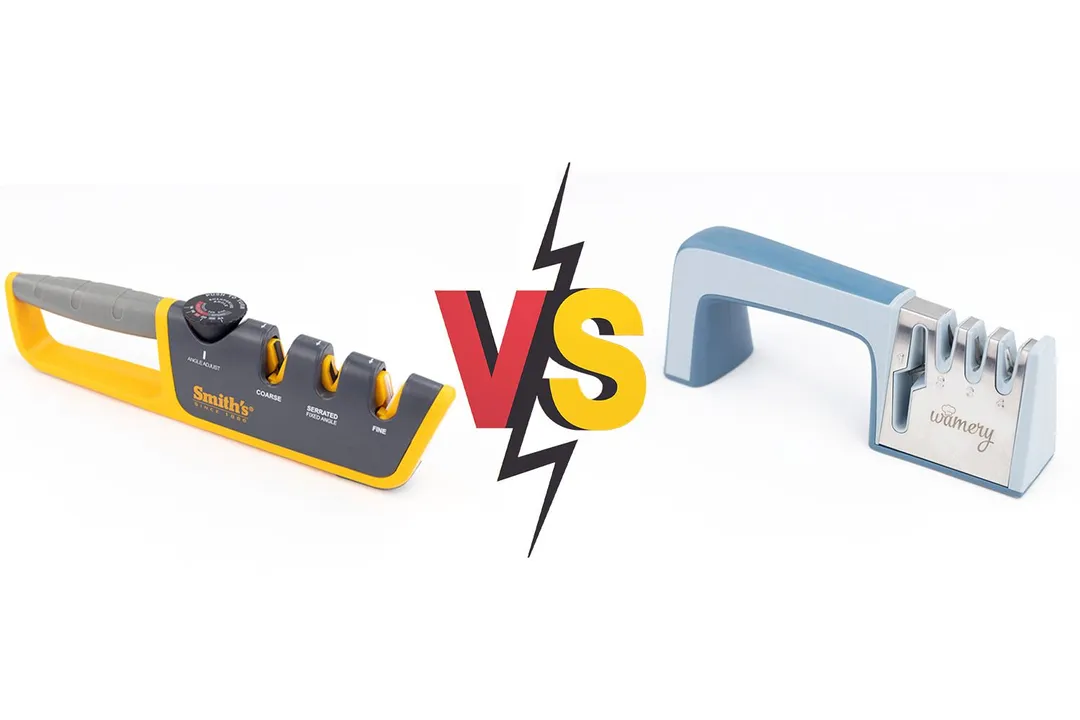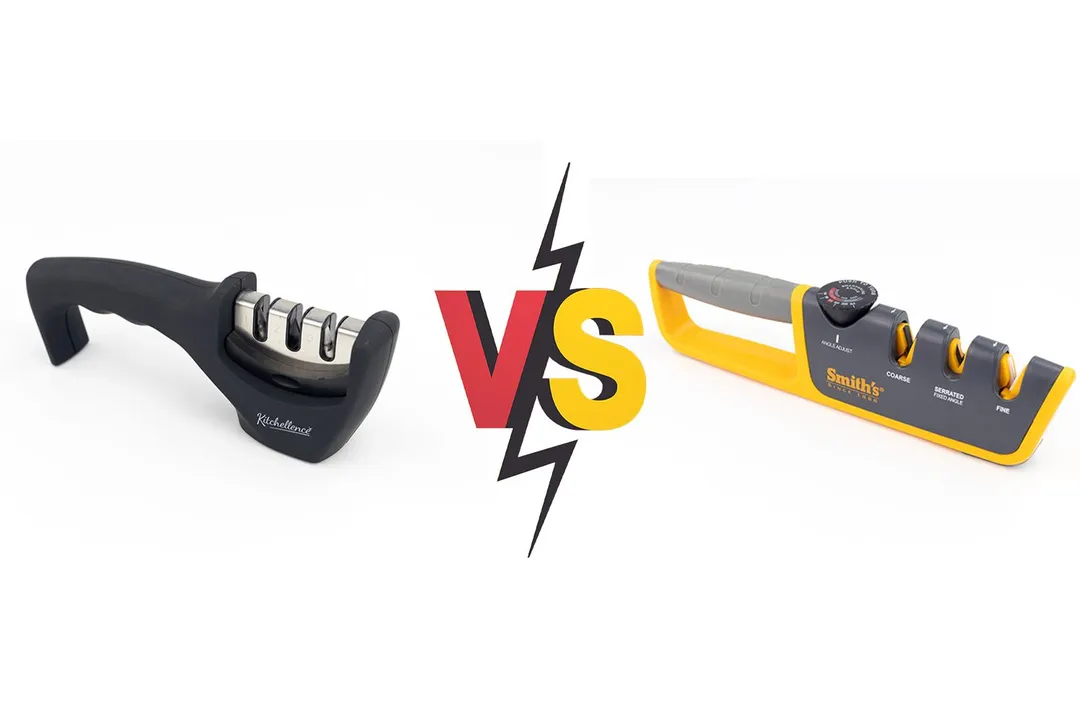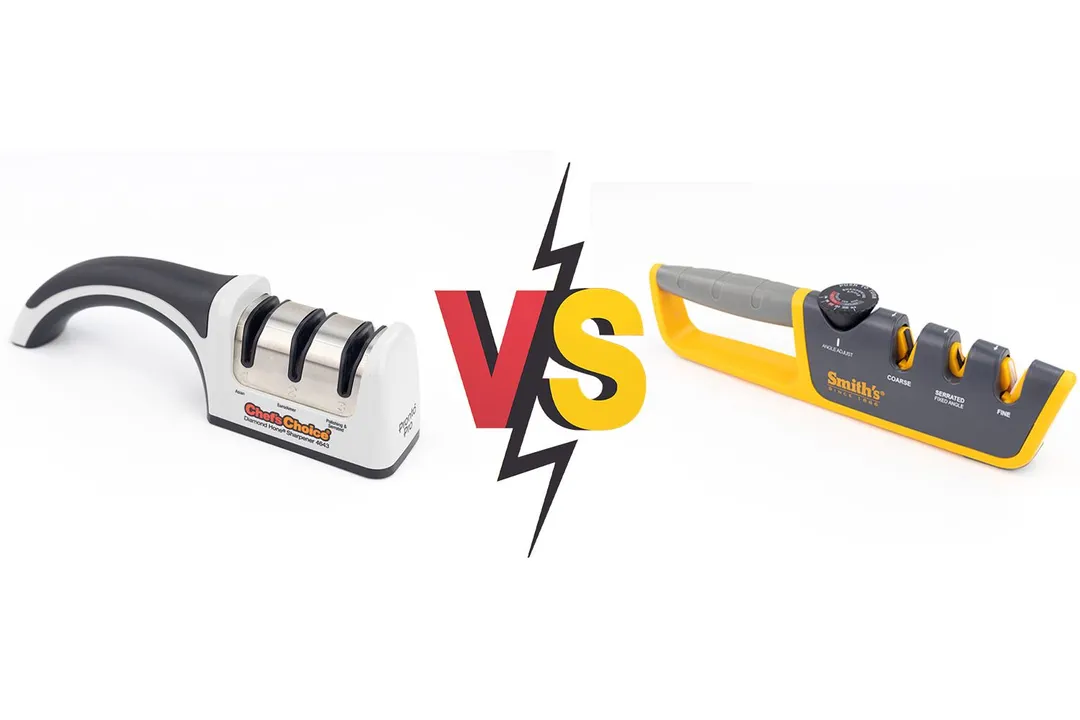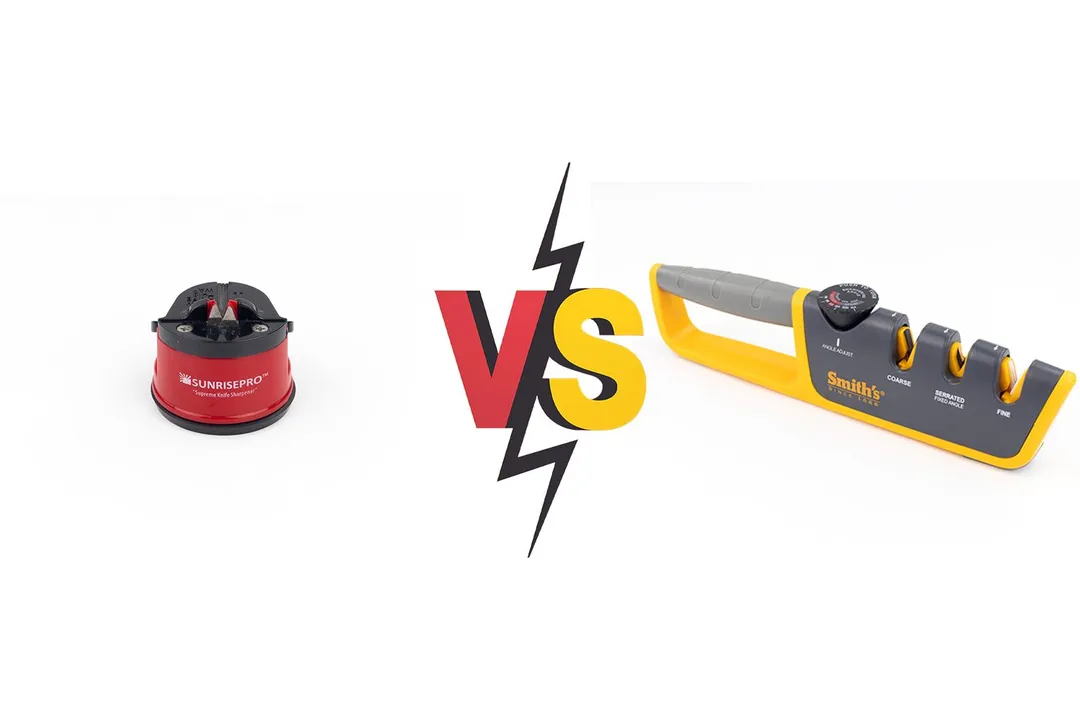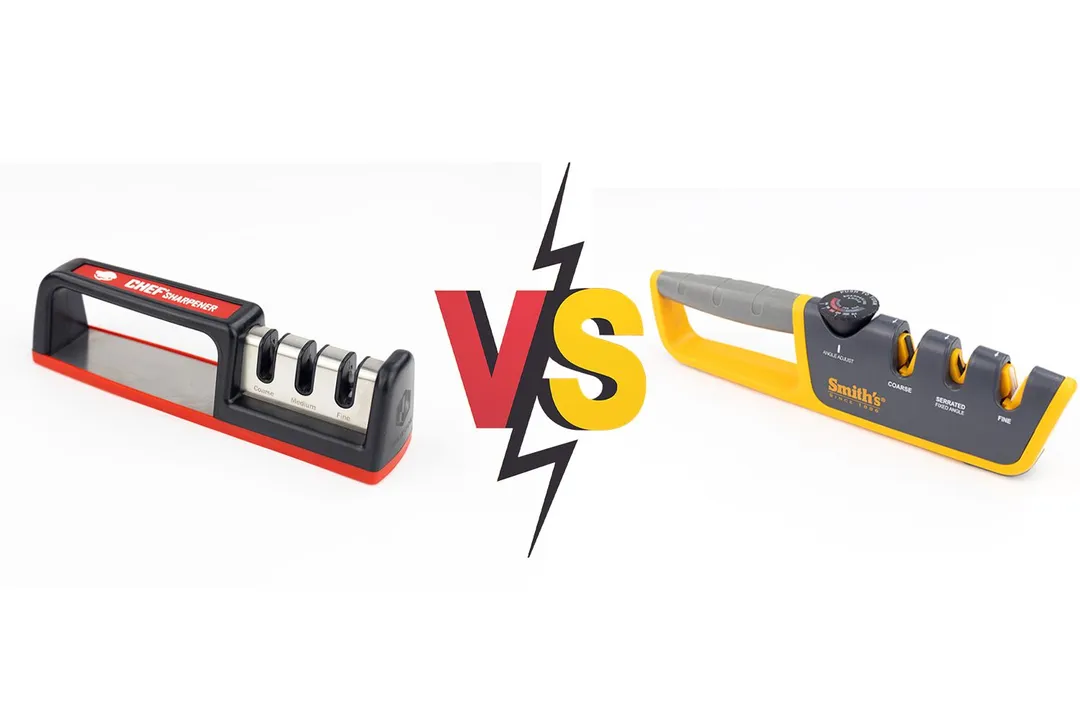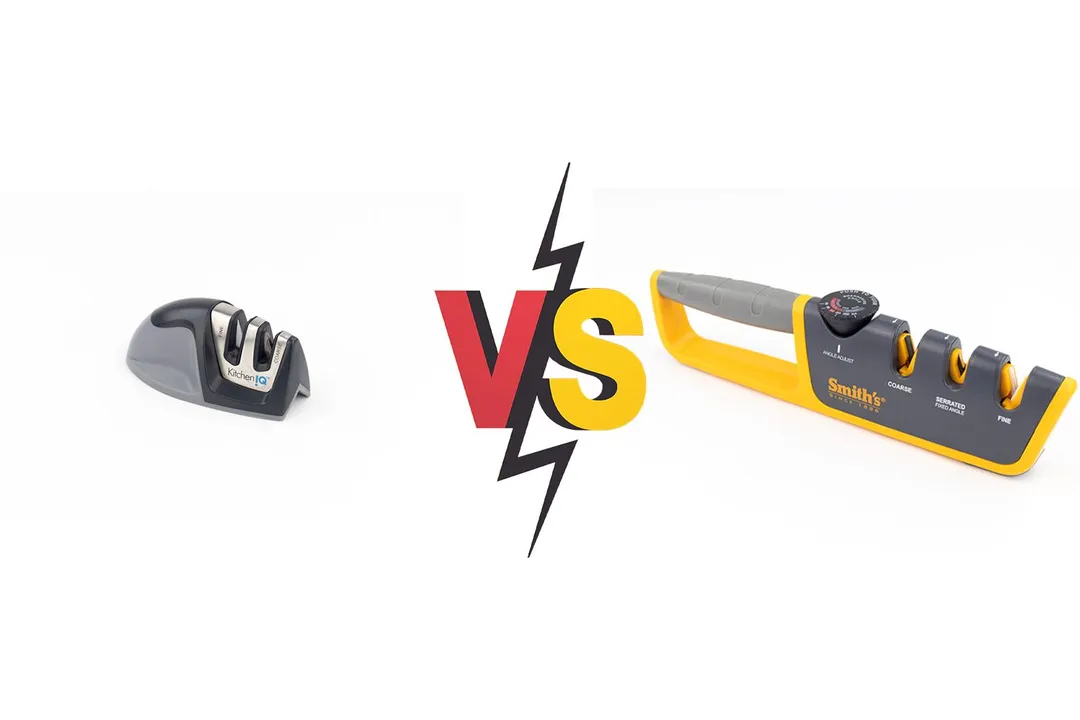Our recommendations are made independently through Research & Testing. We may receive commissions from purchases made via our links.
Smith's 50264 vs. Zwilling 4-Stage Sharpener Side-by-Side Comparison
The Smith's 50264 and the Zwilling sharpeners have a higher price tag than most, but how do they perform? Read our comparison to find out.
Smith's Adjustable
Tested Using Methodology v1.1Zwilling Henckels
Tested Using Methodology v1.1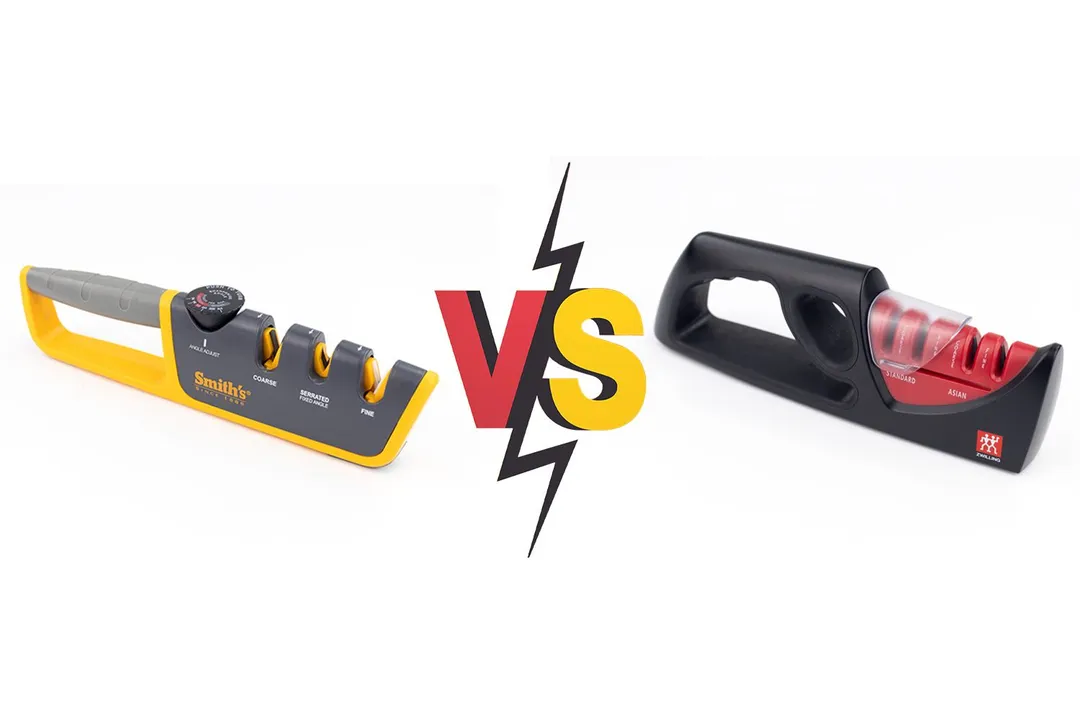
Overall Verdict
The Smith's 50264 3-stage and the Zwilling 4-stage sharpeners have a lot in common. Both sharpen in more than one edge angle, and both have a thin, narrow body. But their sharpening performances are far from similar.
The Smith's 50264 gets the job done quickly—it’s one of the fastest we’ve tested to date. On the other hand, it eats away the knife blade and due to the flexibility of the working section, creates a rough, wavy edge.
The Zwilling designates separate slots for each grind angle, and enjoys more stability as a result. It removes less knife material and produces a much straighter and smoother edge. However, it couldn’t sharpen to the same level that the Smith’s could. It’s also among the slowest to produce results.
Between the two, the Smith’s is the more effective,but there are other devices that offer a more well-rounded sharpening experience—check our rating table to find one that works for you.
Pros & Cons
- Angle-adjustable sharpening
- Sharpening slot for serrated blades included
- Wide slot inserts
- Replaceable abrasives (sold separately)
- Substantial weight
- Sharpens both Asian and standard knives
- Strong build, high-quality body material
- Slot cover
- Beautiful design
- Shears off a considerable amount of metal
- Awkward slot structure
- Long, narrow base
- Brittle sharpening blades
- Anti-slip pad doesn’t fully cover the base
- Awkward grip
Key Specs
Where to Buy
*You help support HealthyKitchen101's product testing and reviews by purchasing from our retail partners.
Analysis and Test Results
Performance
Sharpening Time to Cut a Lemon
Material Retention
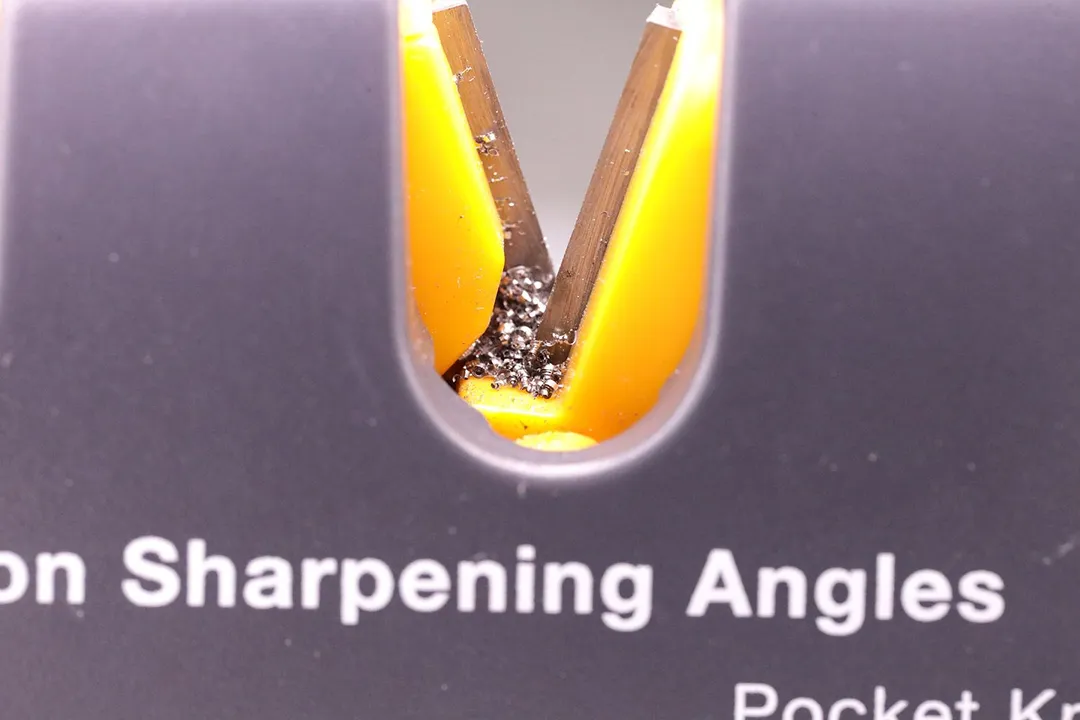

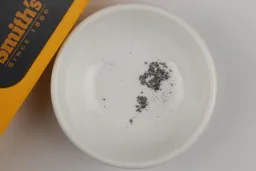
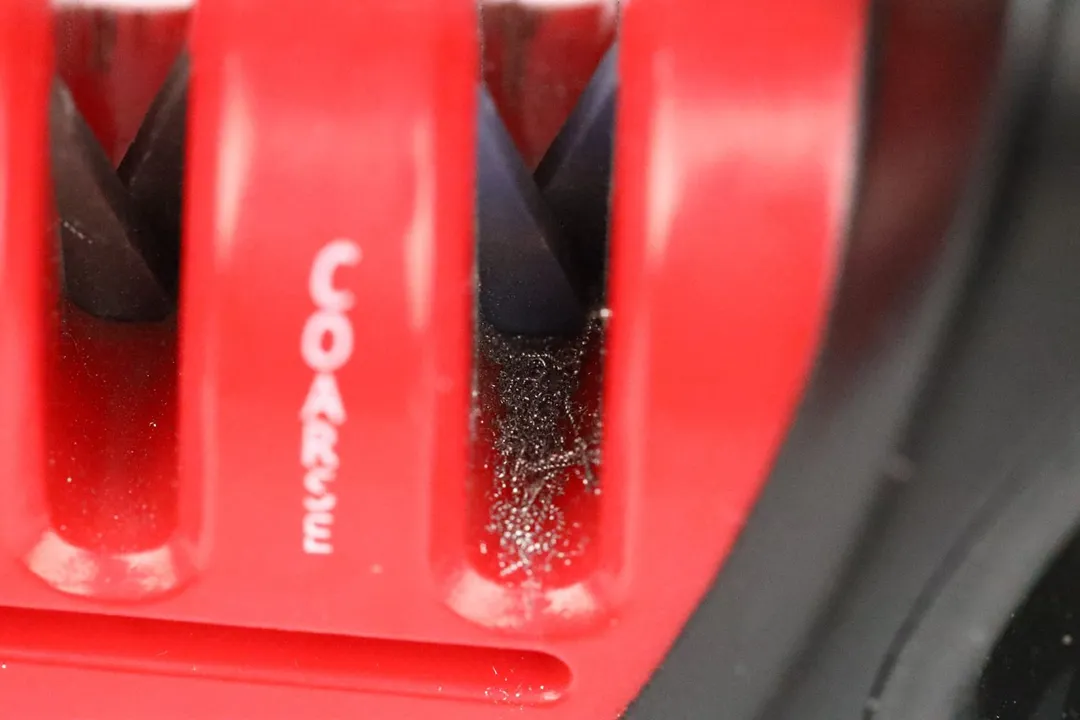
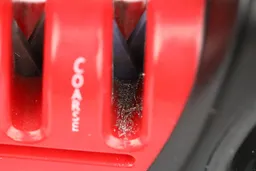
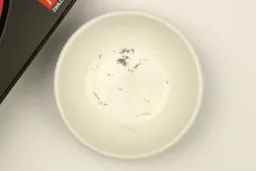
Maximum Sharpness Achieved
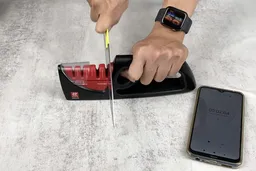
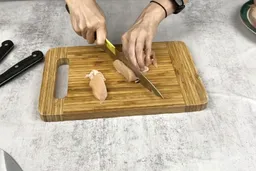
Edge Smoothness

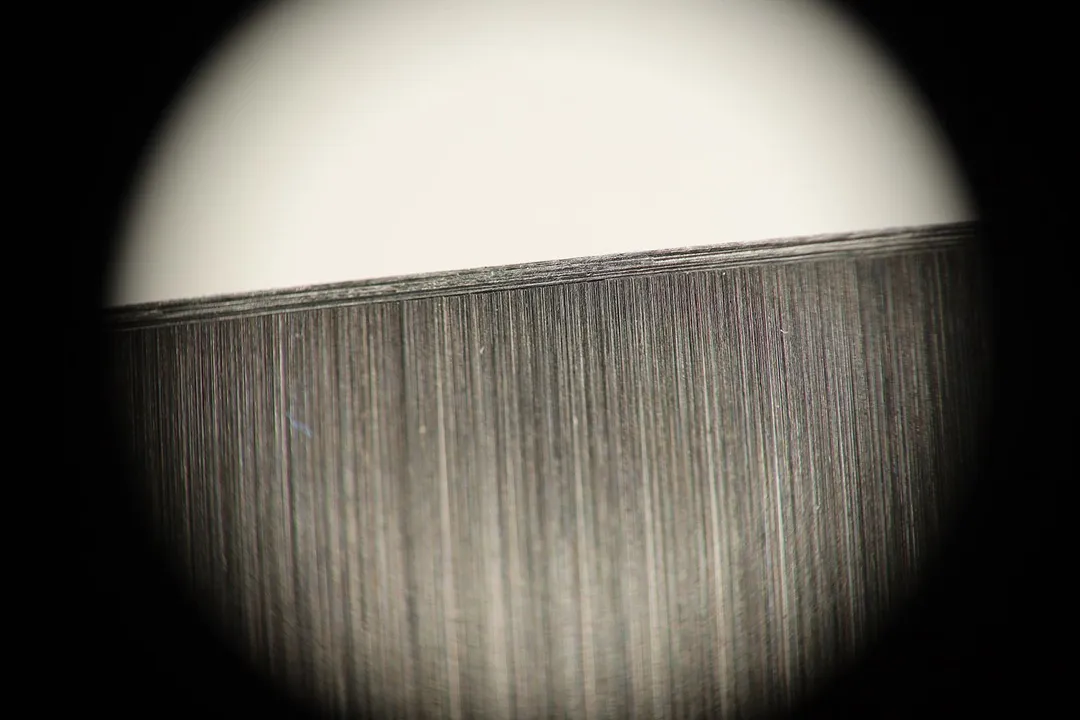
Design
In the Box
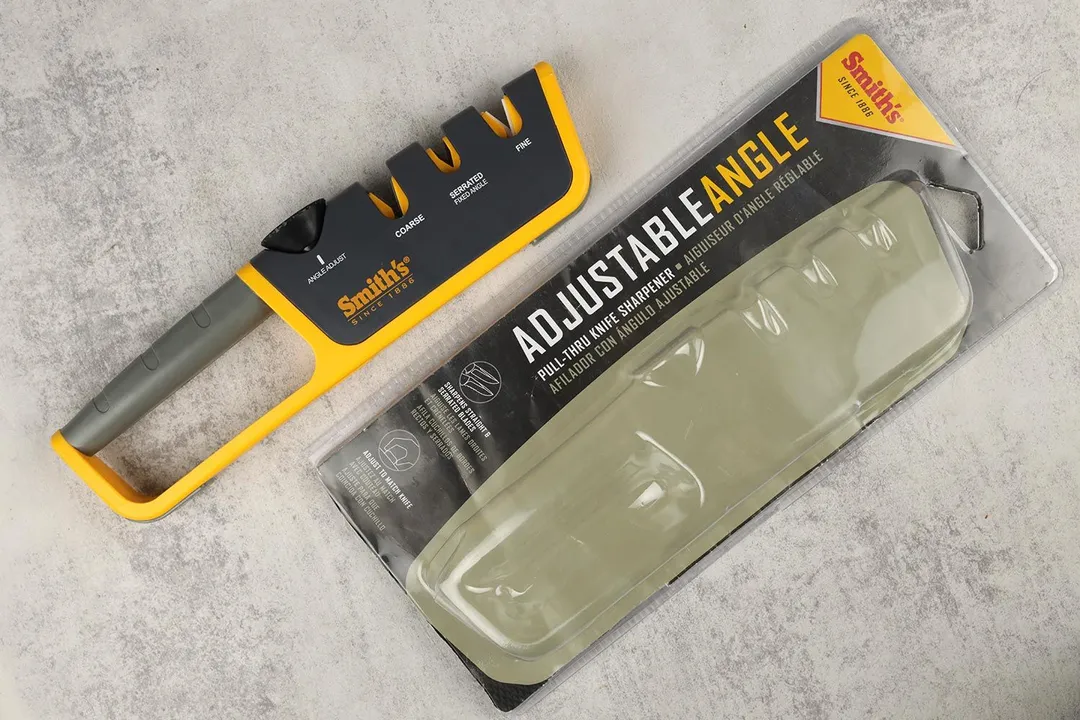
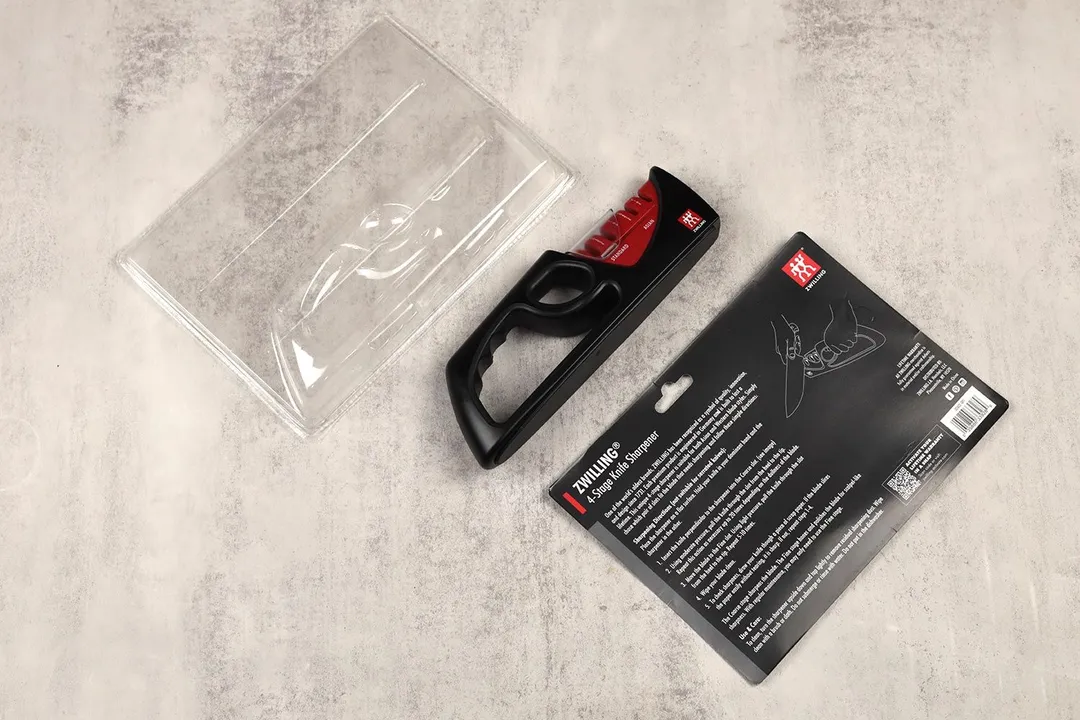
Dimensions
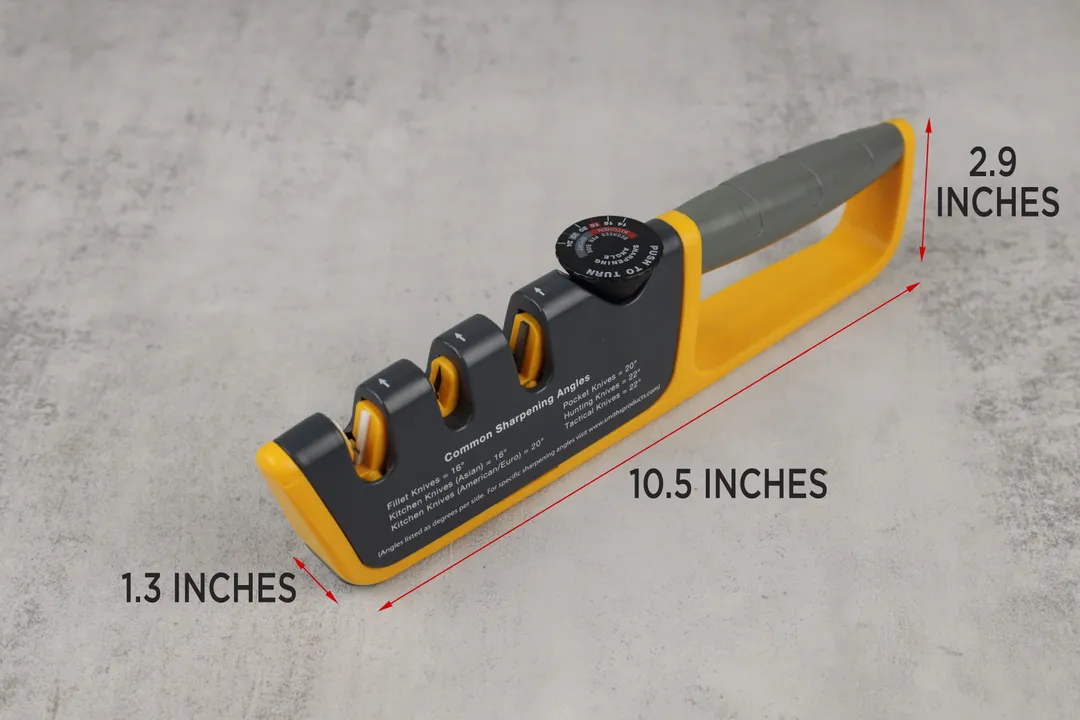

Build Quality
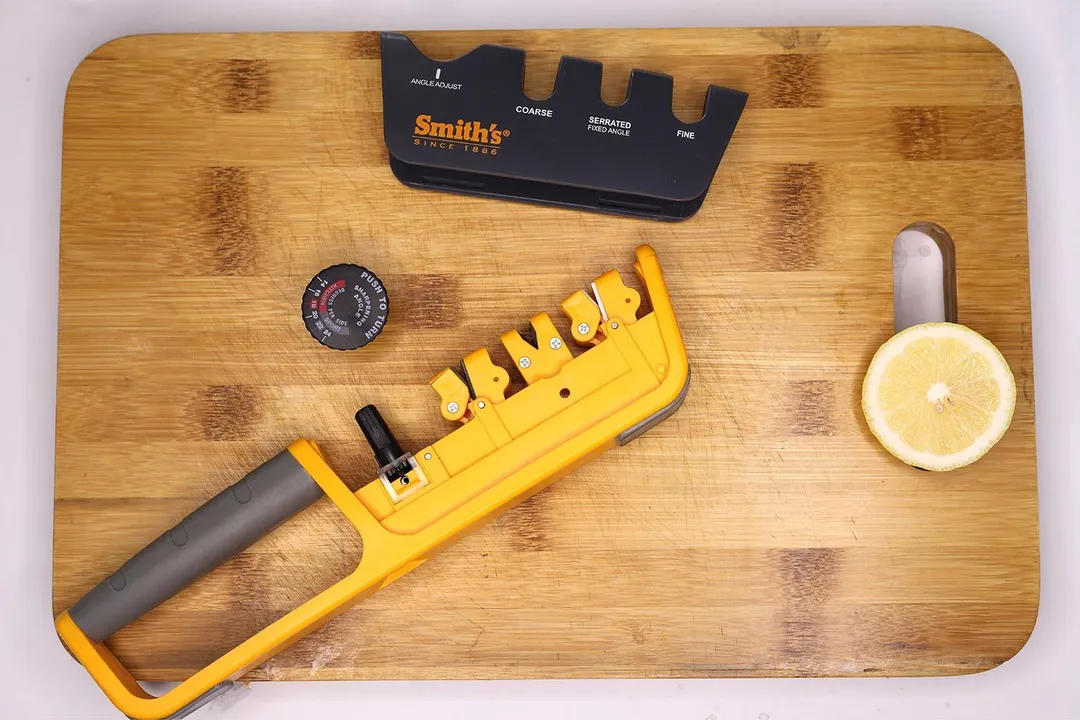
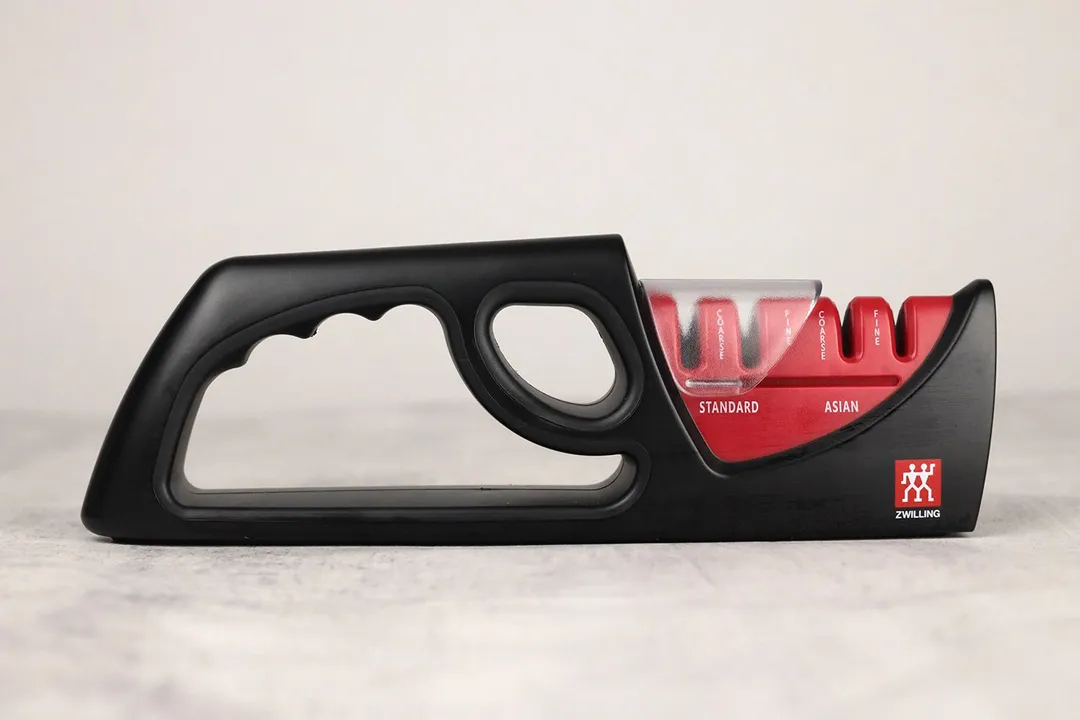
Working Section
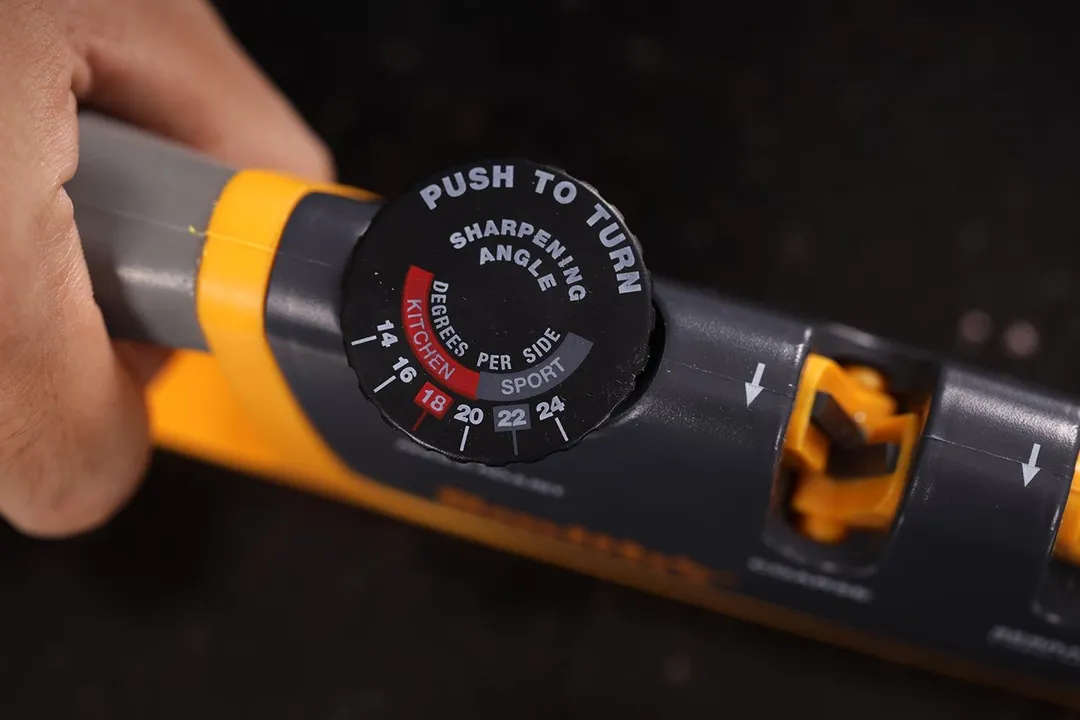
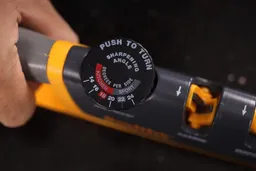

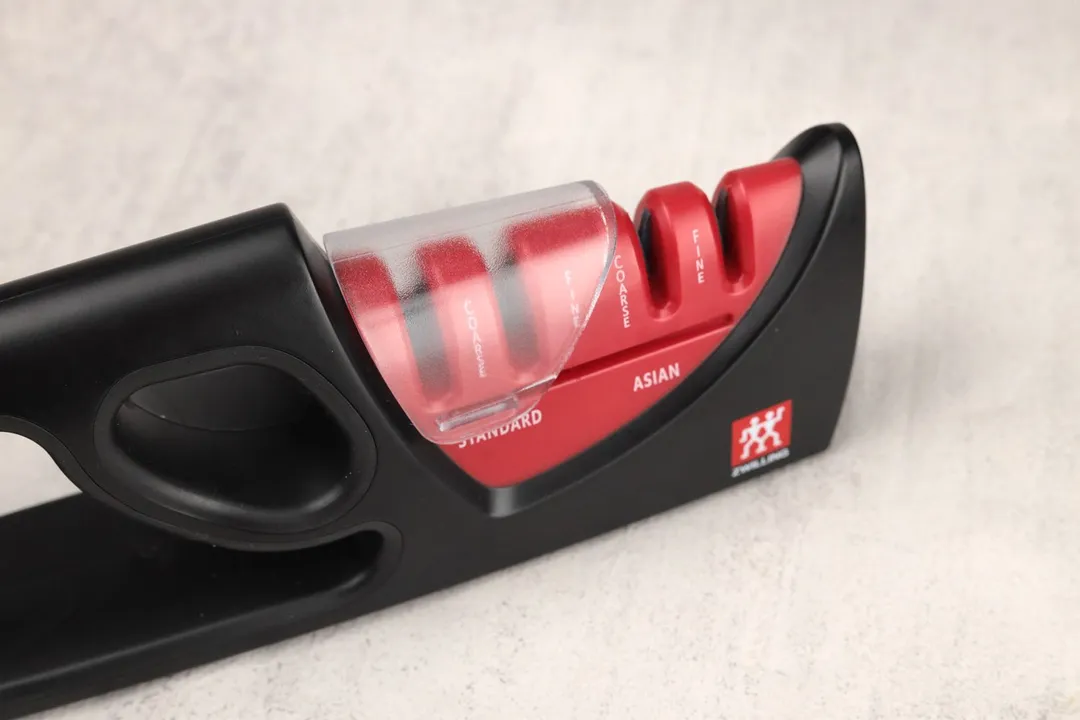
Base
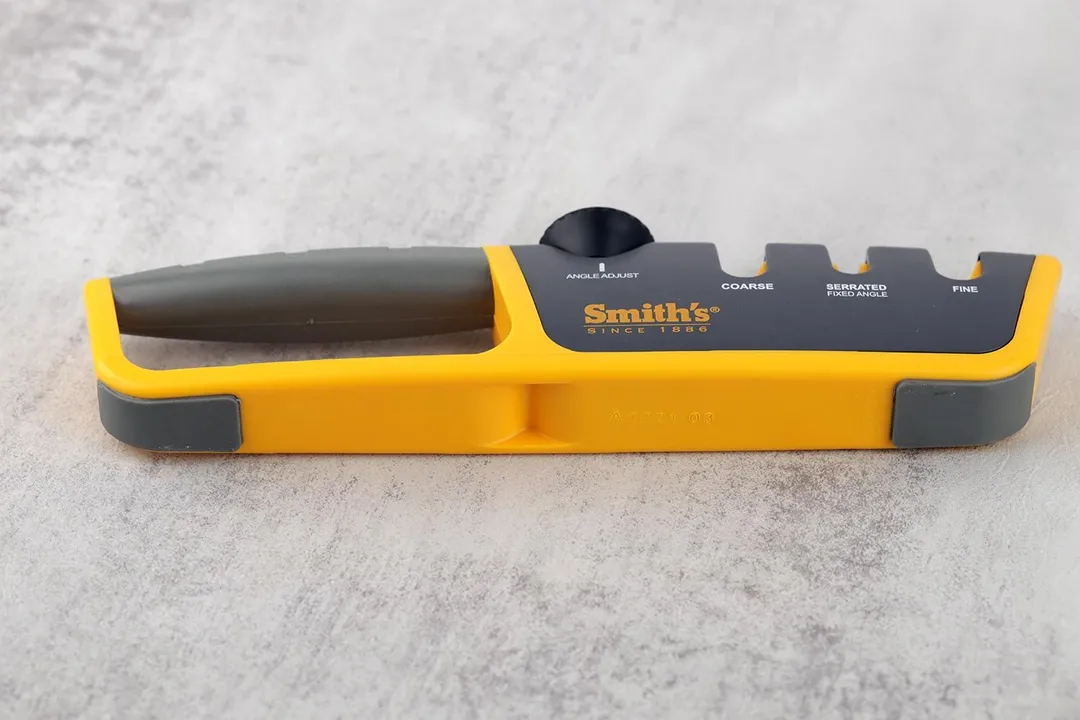
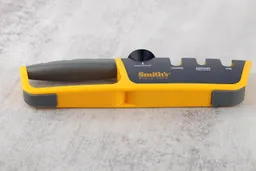
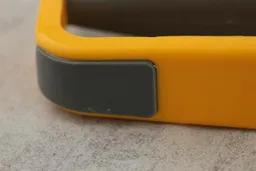

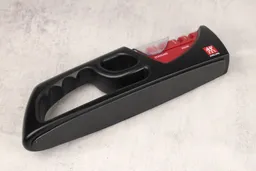

Grip
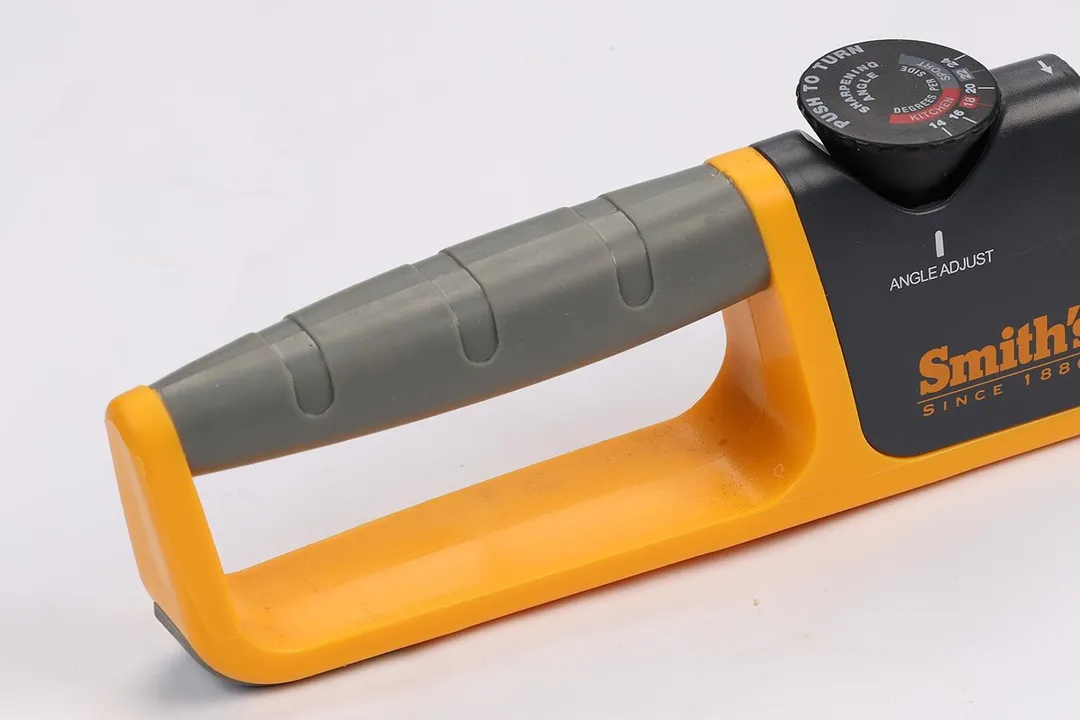
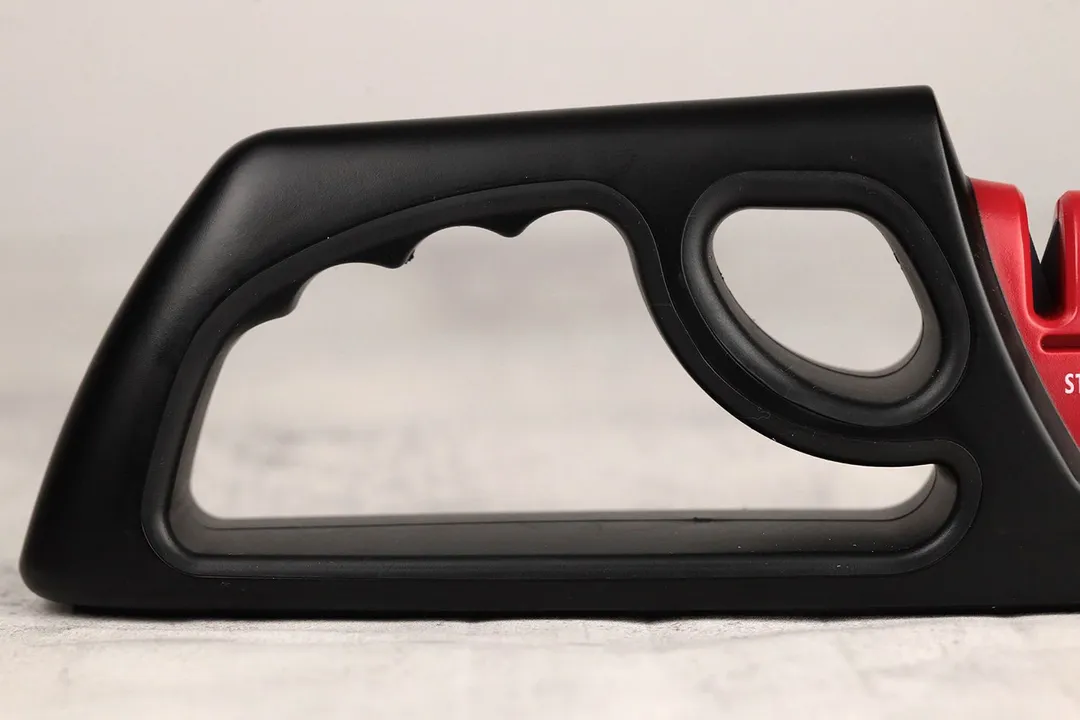

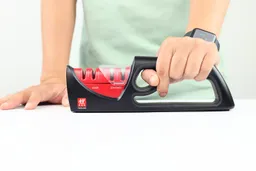
Usability
Slot Arrangement
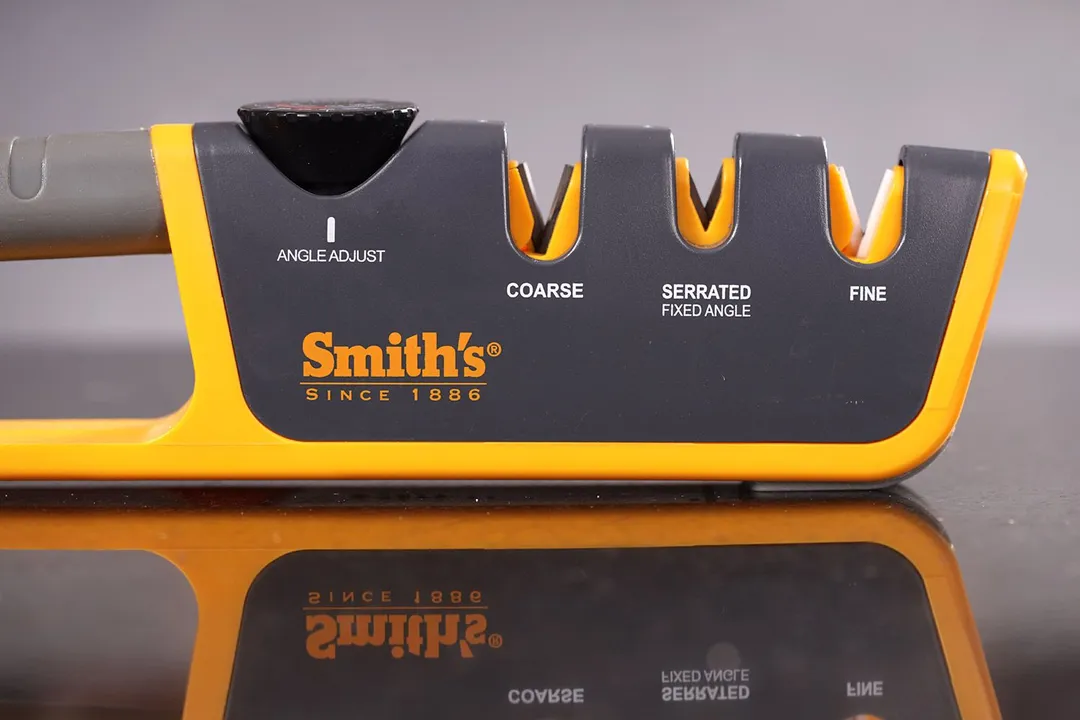

Insertion
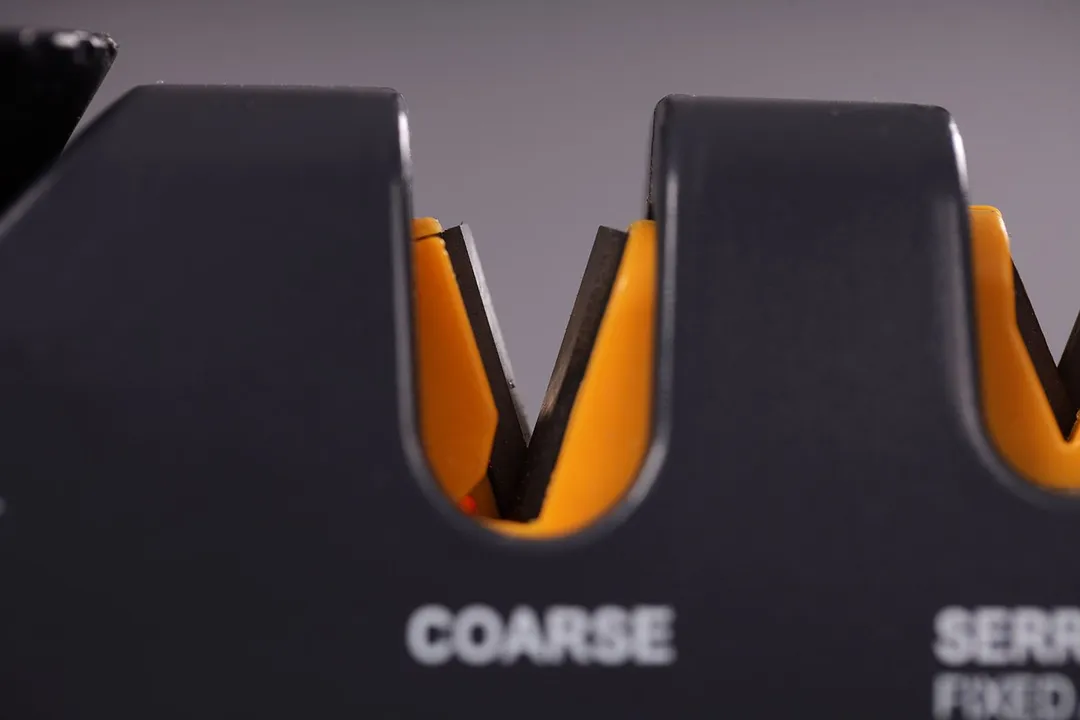
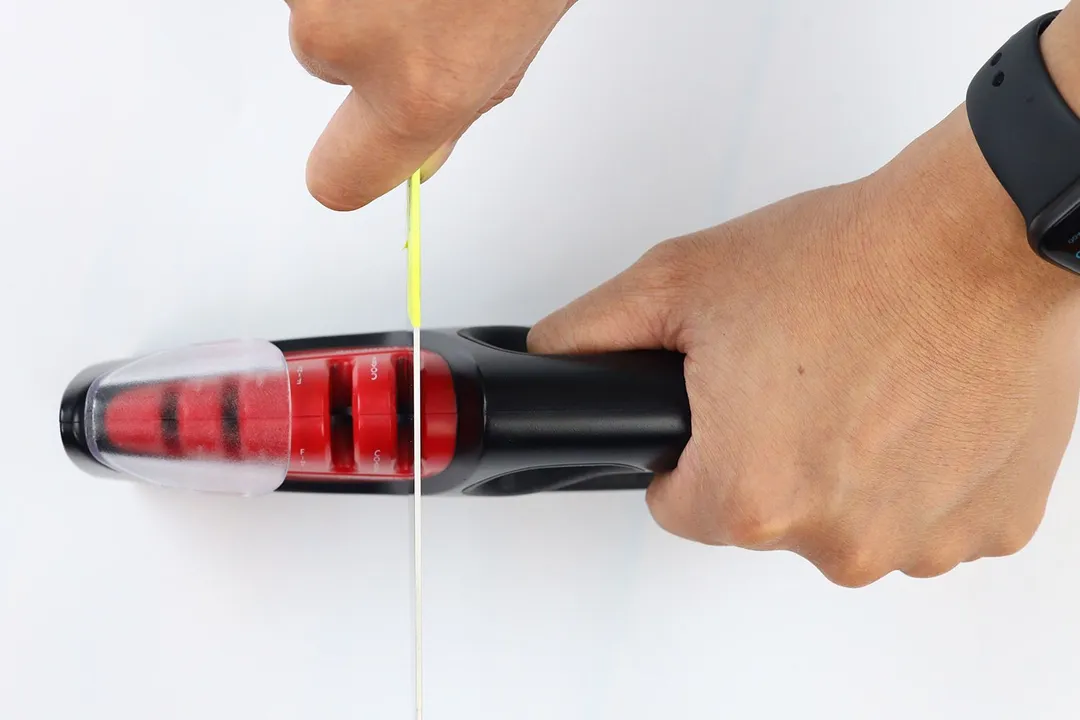
Pulling Through

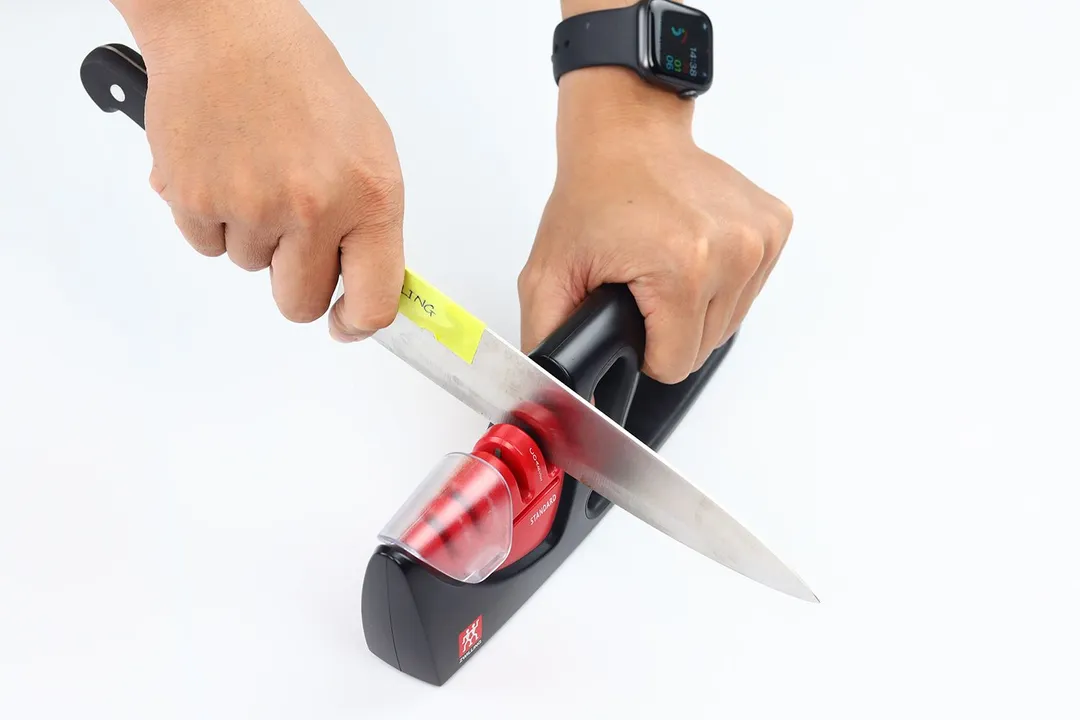
Stability on Clean Surface
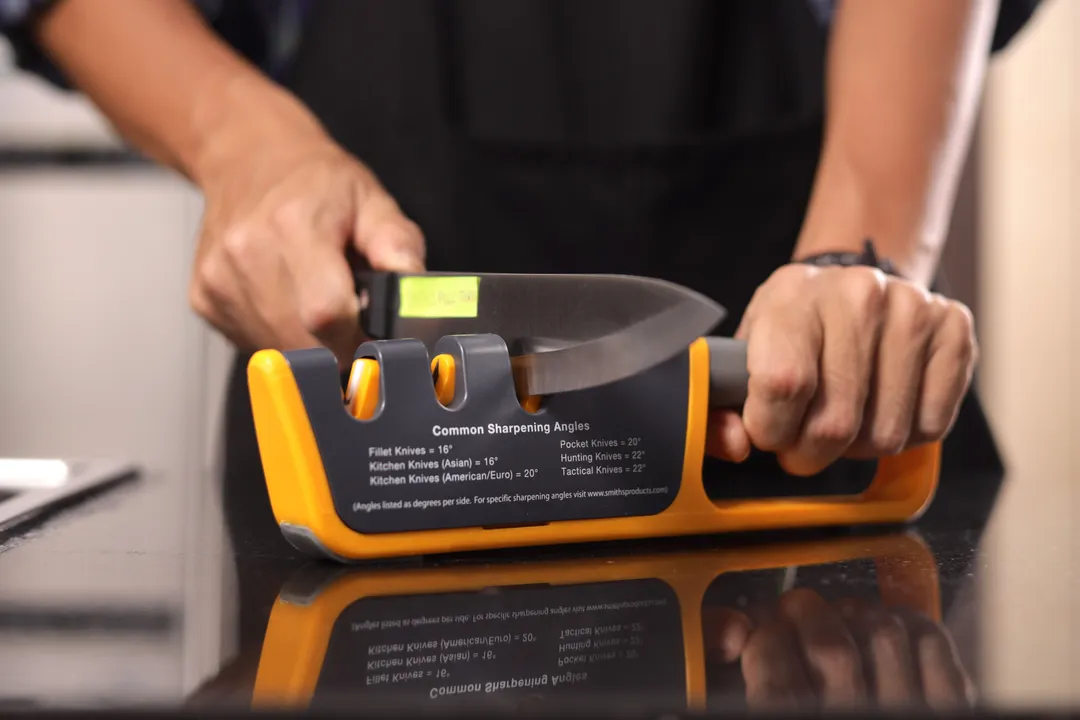
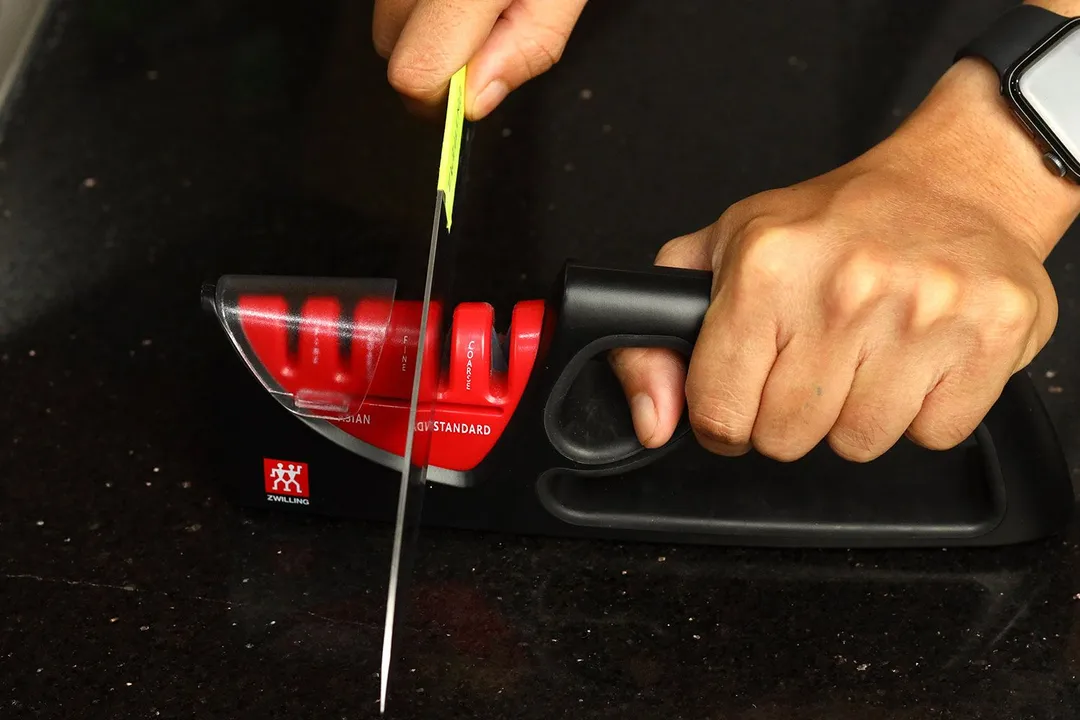
Stability on a Wet and Dirty Surface
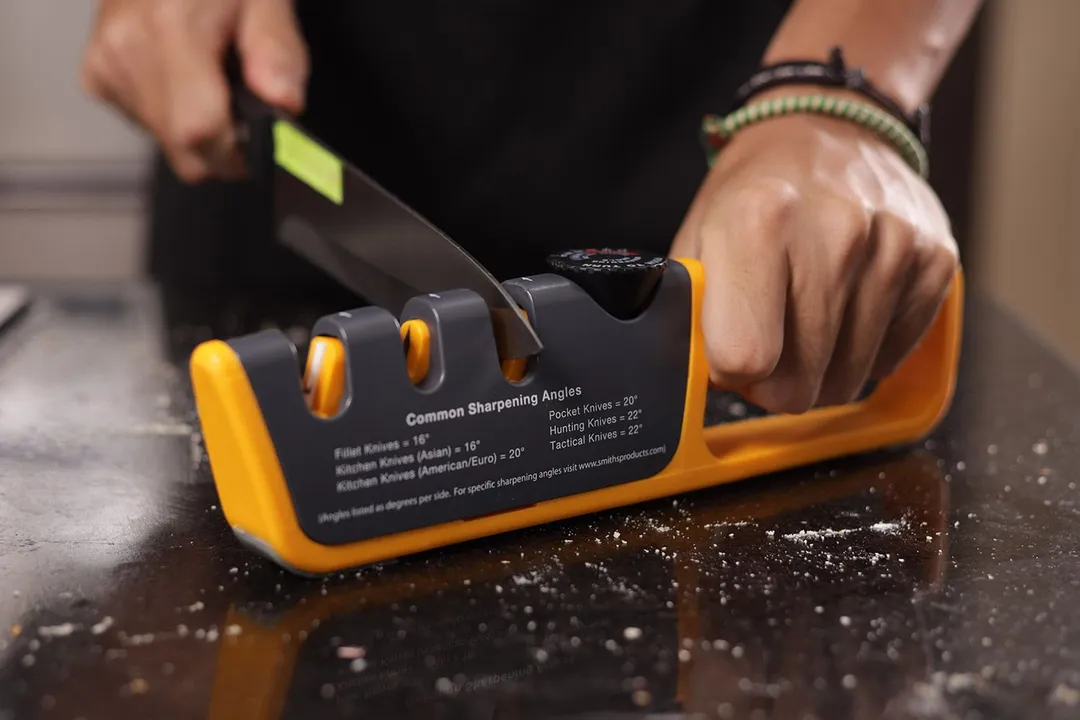
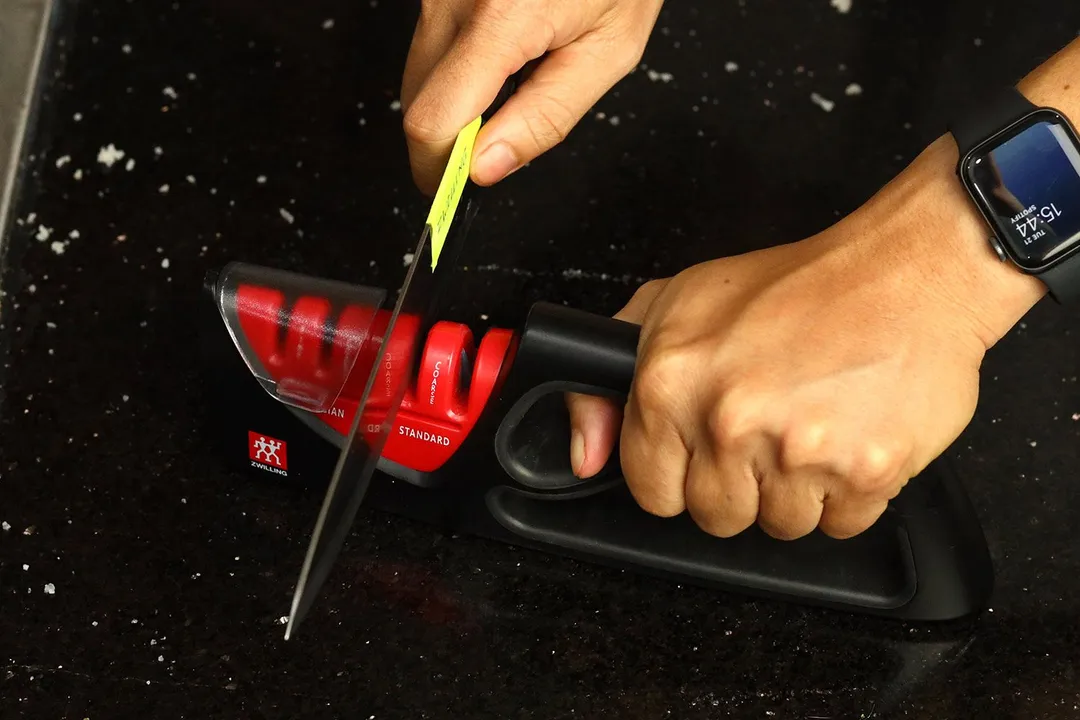
Behind the Comparison
Anh Ngo is a writer with 9 years experience at different media outlets, covering from public news and events to product testing and analysis. At HealthyKitchen101, she works across different departments, communicating closely with its network of writers, editors, and health, tech, and search engine experts to provide a meaningful and pleasant reading experience for visitors.
Lap is Head of the Research, Testing, and Review Team (RTR Team) at HealthyKitchen101.com, where he directs and supervises the testing of kitchen gadgets and appliances.
Nguyen Ntk is a graphic designer, photographer, and videographer whose philosophy centers around respecting and celebrating the beauty of reality. Through his lenses, Nguyen strives to capture the true essence of objects and events, showcasing and highlighting authentic features without distortion or exaggeration.



